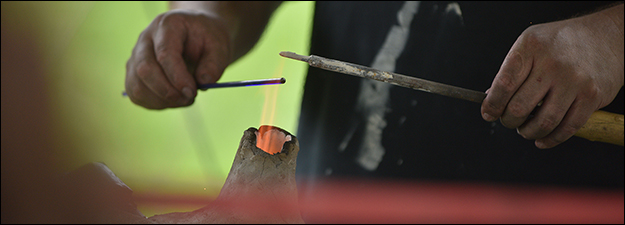The (False) Construct of "Chivalry" and the Brutal Reality of Explicitly Knightly Virtues, 1160-1475
Sponsoring Organization(s)
Seigneurie: Group for the Study of the Nobility, Lordship, and Chivalry
Organizer Name
D'Arcy Jonathan D. Boulton
Organizer Affiliation
Univ. of Notre Dame
Presider Name
Jonathan Lyon
Presider Affiliation
Univ. of Chicago
Paper Title 1
Why Both the Term and Construct of "Chivalry" Must be Abandoned: A Study of over Forty Proposed Codes and Their Use of Chevalerie and Its Cognates, ca. 1160-ca. 1475
Presenter 1 Name
D'Arcy Jonathan D. Boulton
Paper Title 2
Docility and Governmental Organization in the Thirteenth Century: How Noble Knights Lost the Ear of the King of France
Presenter 2 Name
Hagar Barak
Presenter 2 Affiliation
Independent Scholar
Paper Title 3
Defining, Performing, and Questioning: "Chivalry" and Gender in Late Medieval Conduct Literature and the Tournament
Presenter 3 Name
Constanze Buyken
Presenter 3 Affiliation
Deutsches Historisches Institut Paris
Start Date
13-5-2016 1:30 PM
Session Location
Schneider 1330
Description
On the dual basis (1) of a very unsystematic reading of a very limited set of the numerous didactic works setting out the qualities and behaviors thought by their authors to be appropriate to a noble knight, and (2) of a typical failure to distinguish clearly between actual historical usage and that of nineteenth-century historiography, historians have continued to believe in the existence of a generally-recognized knightly-nobiliary “code”, including such elements as liberality, loyalty, and a duty to defend the Church, ladies, widows, and orphans, and designated by its adherents by names ancestral to the modern English word “chivalry”. Recent studies have demonstrated that no true code of this sort existed at least before the year 1200, and that the words in question (principally the Old French chevalerie) bore no comparable sense. Nevertheless, convinced of the reality of the “code of chivalry”, historians have expected to find its origins in the early thirteenth century. The first paper of this session — based on a careful and systematic analysis (1) of the more than 40 codes proposed in works composed in Romance vernaculars between c. 1160 and c. 1475; and (2) of the semantic history of the words of the caballerius family in this period in those works and more generally — demonstrates that, while a large set of qualities and behaviors admired more or less strongly by different sets of noblemen can certainly be identified, these qualities and behaviors were never combined in anything that could be called a “code”, or identified at any time in that period with words related to “chivalry” — which continued to be associated exclusively with martial qualities, actions, activities, and expertise. The other two papers deal with related themes. The second paper is concerned with one of the consequences of the essentially martial, aggressive, and individualist values of noble knights in France in the thirteenth century: their progressive exclusion from the emerging royal bureaucracy, which increasingly demanded efficient and reliable service to the Crown. The third paper deals with the final stage of the relationship between noble knights and ladies long promoted in “chivalric” literature (but only rarely in treatises), analyzing its expression in the context of the increasingly formalised jousting competitions of the later fourteenth and fifteenth centuries, in terms of a dual gender-code in which the highly-masculinized virtues of the knights were validated by the highly-feminized virtues of the ladies who served as witnesses to their actions in the lists.
D'A. J. D. Boulton
The (False) Construct of "Chivalry" and the Brutal Reality of Explicitly Knightly Virtues, 1160-1475
Schneider 1330
On the dual basis (1) of a very unsystematic reading of a very limited set of the numerous didactic works setting out the qualities and behaviors thought by their authors to be appropriate to a noble knight, and (2) of a typical failure to distinguish clearly between actual historical usage and that of nineteenth-century historiography, historians have continued to believe in the existence of a generally-recognized knightly-nobiliary “code”, including such elements as liberality, loyalty, and a duty to defend the Church, ladies, widows, and orphans, and designated by its adherents by names ancestral to the modern English word “chivalry”. Recent studies have demonstrated that no true code of this sort existed at least before the year 1200, and that the words in question (principally the Old French chevalerie) bore no comparable sense. Nevertheless, convinced of the reality of the “code of chivalry”, historians have expected to find its origins in the early thirteenth century. The first paper of this session — based on a careful and systematic analysis (1) of the more than 40 codes proposed in works composed in Romance vernaculars between c. 1160 and c. 1475; and (2) of the semantic history of the words of the caballerius family in this period in those works and more generally — demonstrates that, while a large set of qualities and behaviors admired more or less strongly by different sets of noblemen can certainly be identified, these qualities and behaviors were never combined in anything that could be called a “code”, or identified at any time in that period with words related to “chivalry” — which continued to be associated exclusively with martial qualities, actions, activities, and expertise. The other two papers deal with related themes. The second paper is concerned with one of the consequences of the essentially martial, aggressive, and individualist values of noble knights in France in the thirteenth century: their progressive exclusion from the emerging royal bureaucracy, which increasingly demanded efficient and reliable service to the Crown. The third paper deals with the final stage of the relationship between noble knights and ladies long promoted in “chivalric” literature (but only rarely in treatises), analyzing its expression in the context of the increasingly formalised jousting competitions of the later fourteenth and fifteenth centuries, in terms of a dual gender-code in which the highly-masculinized virtues of the knights were validated by the highly-feminized virtues of the ladies who served as witnesses to their actions in the lists.
D'A. J. D. Boulton

